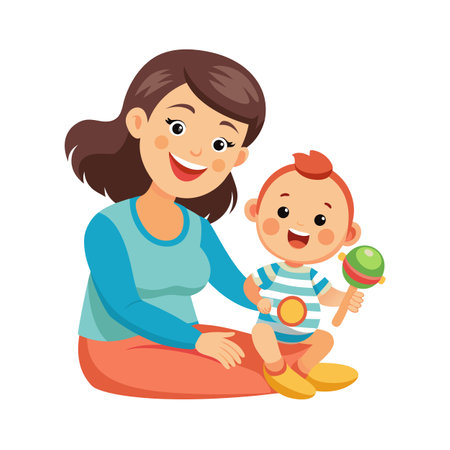Introduction: Why Go Beyond the Book?
When most people think of story time, they picture curling up with a good book and reading aloud. But what if we stepped outside the pages for a change? In today’s digital world, families are looking for ways to connect, create lasting memories, and inspire imagination—without relying on screens or even traditional books. That’s where DIY Story Time comes in.
Interactive storytelling isn’t just fun; it also helps kids develop important skills like listening, creative thinking, and expressing themselves. Plus, when families join in together—acting out stories, making up new adventures, or using everyday objects as props—everyone gets to play a part. This type of hands-on storytelling fosters strong family bonds and gives everyone a break from screen time while still learning and laughing together.
Why Try Creative Storytelling?
| Benefit | How It Helps Your Family |
|---|---|
| Sparks Creativity | Keeps imaginations active by encouraging kids to invent their own stories or endings. |
| Builds Communication Skills | Kids practice listening and speaking as they share ideas and respond to each other. |
| Strengthens Family Bonds | Working together on stories creates shared memories and builds trust. |
| Promotes Screen-Free Fun | Provides meaningful entertainment without electronics or apps. |
Storytelling Without Limits
You don’t need fancy materials or expensive books to have a great story time. Blankets can become capes, socks can be puppets, and your living room can transform into a magical kingdom. By going beyond traditional books, you give your family permission to get silly, try new things, and discover just how creative you all can be together. Whether it’s through puppet shows, homemade props, or simply making up stories around the dinner table, there’s no wrong way to tell a story when you’re doing it as a team.
Puppet Shows at Home
Bring Stories to Life with Homemade Puppets
Turning your living room into a mini-theater can make story time truly magical. With just a few simple supplies, you and your kids can create sock or paper bag puppets, then use them to act out favorite stories or invent brand new tales together. This hands-on approach helps children engage with stories in a whole new way while boosting creativity and confidence.
Easy Puppet-Making Ideas
| Puppet Type | What You Need | How To Make |
|---|---|---|
| Sock Puppet | Old sock, markers, buttons, glue, yarn | Slip the sock on your hand, glue on buttons for eyes, use markers for a mouth, and yarn for hair. Let dry before using. |
| Paper Bag Puppet | Paper lunch bag, crayons, construction paper, glue stick | Decorate the flap of the bag as the face with crayons or paper cutouts. Use the body of the bag for clothes and details. |
Tips for a Fun Puppet Show Experience
- Pick a Favorite Story: Choose a book your child loves or make up your own story together.
- Create Simple Scripts: Write down key lines or just improvise as you go. Don’t worry about perfection—goofy voices are encouraged!
- Set Up Your Stage: Use a couch or table as the stage. A simple blanket draped over two chairs makes a great puppet theater curtain.
- Invite an Audience: Gather family members or even stuffed animals to watch the show.
- Add Music and Props: Use household items like spoons as props and play background music from your phone for extra flair.
The Benefits Go Beyond Fun
Puppet shows help kids develop language skills, practice storytelling, and build self-confidence. Plus, making puppets together is a screen-free bonding activity that sparks laughter and imagination. Next time you want to mix up story time, grab those socks or bags—and let the show begin!

3. Story Stones and DIY Props
If you’re looking for a hands-on, creative way to make story time come alive, story stones, felt boards, and everyday household props are your new best friends. These fun tools let you build stories together with your kids—no need to stick to the script of traditional books!
What Are Story Stones?
Story stones are simply smooth rocks that you decorate with images or words. You can paint them yourself or use stickers if painting isn’t your thing. Each stone represents a character, place, or object. Mix and match to invent a brand-new story every time.
How to Make Story Stones
| Materials Needed | Steps |
|---|---|
| Smooth rocks (washed & dried) | Gather rocks from your yard or craft store. |
| Acrylic paint or permanent markers | Draw simple images: animals, people, trees, houses. |
| Mod Podge or clear sealant (optional) | Seal the images so they last longer. |
Felt Boards for Flexible Stories
A felt board is basically a big piece of felt stretched over cardboard. Cut out shapes and figures from colored felt—think clouds, cars, animals, even letters! The pieces stick to the board without glue, making it super easy to swap out characters or settings as your story grows.
DIY Felt Board Ideas
- Create sets for favorite fairy tales: castles, forests, dragons.
- Make pieces for family stories: your home, pets, family members.
- Add numbers or alphabet pieces for learning while storytelling.
Everyday Props: Imagination at Home
You don’t need fancy supplies. Grab items around the house—a spoon becomes a magic wand; a scarf turns into a superhero cape. Everyday objects help kids step right into the adventure and make stories interactive.
Everyday Prop Inspiration Table
| Household Item | Possible Role in Stories |
|---|---|
| Pillowcase | Cape, sack of treasure, ghost costume |
| Ladle | Knight’s sword, pirate’s hook |
| Mason jar | Magic lantern, fairy house |
| Socks | Puppets, monster feet |
| Tupperware lid | Shield, flying saucer |
The next time you want to tell a story with your child, try reaching for some stones, felt pieces, or just random stuff from around the house. These DIY storytelling props spark creativity and make every story time different—and way more memorable!
4. Audio Storytelling and DIY Podcasts
Guide to Recording Your Family’s Own Stories
Audio storytelling is a fun and modern way to bring your family’s stories to life. With the popularity of podcasts, even kids are getting excited about listening to stories in a whole new way. Plus, recording your own homemade audiobooks or podcasts is easier than ever and can be a fantastic bonding activity for families.
Why Try Audio Storytelling?
- Fosters Listening Skills: Kids get better at focusing and understanding when they listen to stories.
- Encourages Creativity: Everyone can play different roles, use silly voices, or add sound effects.
- Makes Memories Last: You’ll have special recordings you can replay for years.
- No Fancy Equipment Needed: All you need is a smartphone or tablet!
How to Start Your Own Family Podcast or Audiobook
- Pick a Story: Choose a favorite family story, a classic fairy tale, or make up something brand new together.
- Assign Roles: Decide who will narrate, who will play characters, and who will help with background sounds.
- Practice Makes Perfect: Read through your script once or twice so everyone feels comfortable.
- Record It: Use your phone’s voice memo app or a free recording app like Audacity or GarageBand.
- Edit (Optional): Add music or sound effects for extra fun! Kids love hearing themselves roar like dragons or giggle as fairies.
- Share and Listen: Play back your recording during car rides, bedtime, or send it to grandparents so everyone can enjoy your creative work.
Simple Audio Tools You Can Use
| Tool/App Name | Best For | Where to Find It |
|---|---|---|
| Voice Memos (iPhone) | Quick & easy family recordings | Builtin on iPhones |
| Easy Voice Recorder (Android) | User-friendly audio capture | Google Play Store |
| Audacity | Edit & add effects on computer | audacityteam.org (free download) |
| GarageBand | Create more advanced audio projects | Builtin on Mac devices or Apple Store |
Troubleshooting Tips for Beginners
- If someone gets giggly or forgets their lines, just pause and try again—mistakes make the story even more memorable!
- If background noise sneaks in (like the dog barking), it adds personality—or record in a quieter room next time.
- If you want to keep things private, just share recordings within your family group chat instead of uploading online.
This hands-on approach helps children build important listening skills while sparking their imaginations. Whether you’re retelling old family legends or inventing wild adventures, audio storytelling makes every voice in the house part of the magic!
5. Outdoor Story Expeditions
Why stay indoors when you can turn your backyard or local park into a magical storytelling adventure? Outdoor story expeditions are a fantastic way to blend movement, creativity, and imagination with DIY story time. Kids love the excitement of exploring, and fresh air always adds a spark to their energy. Here are some fun ways to make stories come alive outside:
Scavenger Hunt Stories
Create a simple scavenger hunt that ties into your favorite story. For example, if you’re reading about pirates, hide “treasures” (like costume jewelry or gold-painted rocks) around your yard. Give kids a map or clues written in rhyme, and let them search for each item as part of the tale.
| Theme | Items to Find | Story Connection |
|---|---|---|
| Pirate Adventure | Gold coins, bandana, eye patch | Find pirate gear before sailing to Treasure Island |
| Fairy Tale Forest | Pinecones, magic wands (sticks), crowns (paper) | Gather magical items to rescue the woodland creatures |
| Dinosaur Dig | Plastic dinosaur bones, leaves, “fossils” | Collect fossils while escaping the erupting volcano |
Backyard Adventures
You don’t need fancy supplies—just your imagination! Turn your backyard into a kingdom, jungle, or space station. Let kids act out parts of the story as you narrate: chase dragons behind bushes, tiptoe past sleeping bears (your dog’s bed!), or hop from rock to rock across an imaginary river.
Ideas for Backyard Story Play:
- The Royal Quest: Assign roles like king, queen, knight, and have kids search for the missing crown.
- Wild Safari: Pretend binoculars in hand, spot “wild animals” (stuffed toys hidden around the yard).
- Astronaut Training: Jump from planet to planet (colored paper circles), collect moon rocks (painted stones).
Interactive Nature Tales
Narrate a story inspired by what you see outdoors. If you spot a squirrel, weave it into your tale as a clever hero. Ask kids to add details: “What do you think happens next?” Encourage them to gather leaves, sticks, or pebbles to use as props or create natural art illustrating their favorite scene.
Tips for Success:
- Dress for mess! Outdoor play can get dirty—in the best way.
- Let kids lead; their ideas often make stories even better.
- Use everyday nature finds as inspiration—every acorn can be magic in the right story!
Taking stories outside not only sparks creativity but also helps burn off energy and encourages teamwork. The world is full of possibilities—just step outside and start telling your own outdoor adventure!
6. Digital Story Creation
Gone are the days when storytelling was just about reading from a book! Kids today can become digital storytellers, mixing their love for stories with fun tech tools. Using kid-friendly apps and websites, you can help your child create digital comics, animated tales, or even short movies. It’s an awesome way to encourage creativity while letting them explore technology in a safe, meaningful way.
Why Try Digital Storytelling?
- Boosts Creativity: Kids get to draw, write, record voices, and add music.
- Builds Tech Skills: They learn how to use simple digital tools—a must-have skill!
- Makes Sharing Fun: Stories can be shared with family or friends online (with parental guidance).
Kid-Friendly Apps & Platforms
| App/Platform | What You Can Do | Best For Ages |
|---|---|---|
| PBS KIDS ScratchJr | Create interactive stories and games with coding blocks | 5-8 |
| Toontastic 3D | Draw characters, record voices, and animate entire stories | 6-12 |
| Book Creator | Add photos, text, audio, and drawings to make digital books | 7+ |
| Pixton Comics | Create your own comic strips with customizable characters | 8+ |
| iMovie (Mac/iOS) | Edit videos, add sound effects, and create mini-movies easily | 8+ |
How To Get Started:
- Pick a Story Idea: Ask your child what kind of story they want to tell—maybe about their pet or a wild adventure!
- Select an App: Choose one from the list above based on your child’s age and interests.
- Create Together: Help them plan out scenes, record voices, and add pictures or drawings.
- Add Finishing Touches: Let them play around with sound effects or music for that final wow factor.
- Share (Safely): Show the finished story to family or close friends. Make sure sharing is done privately and safely online.
Telling Stories in a Whole New Way
This hands-on approach turns screen time into creative time. With digital storytelling, kids aren’t just watching—they’re making something totally their own. It’s fun for them and inspiring for you to watch their imaginations come alive through technology!


